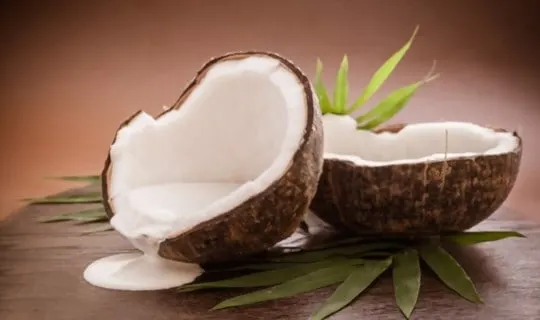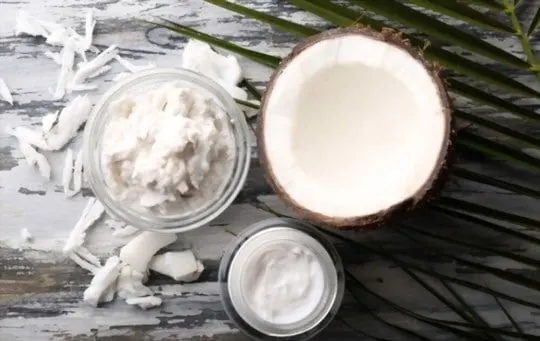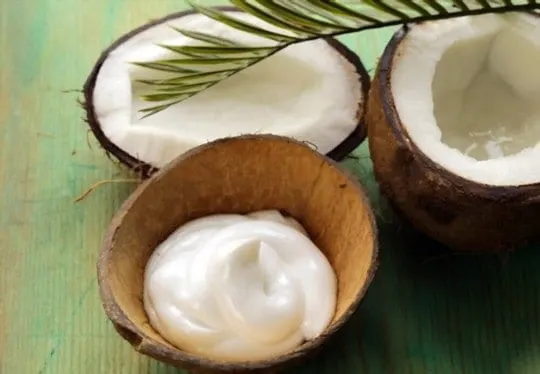Coconut has been used for thousands of years to add flavor to food, and coconut cream is integral to many recipes.
You can buy canned coconut cream off the shelf or in a jar, but you can also make your own by simply blending the coconut meat with water.
Coconut cream is a thick white liquid that can be used in all sorts of recipes.
For example, it adds flavor to soups and curries while enriching the dish with needed vitamins and minerals.
A popular recipe for Thai curry paste uses coconut cream as its base, showing how versatile it is.
It can even be used to make ice cream, and some people believe that adding coconut cream to coffee makes the drink more palatable.
Can you freeze coconut cream? Since it is fat-based and rich, it is considered one of the foods that can be frozen safely in your freezer, so yes, you certainly can freeze coconut cream.
In this article, we will guide you through the process of freezing coconut cream so that you can reap all the benefits this versatile ingredient has to offer.
Culinary Uses of Coconut Cream

Coconut cream is becoming increasingly popular in a wide variety of recipes, and it’s unlikely that its culinary uses will stop there.
It can add a rich, creamy element to both sweet and savory dishes and baked goods such as cakes and pastries.
In addition to this, coconut cream makes an excellent base for soups and curries, which is popularly used in Thai cooking.
Coconut cream is thick and looks like whipped cream.
It’s not solid like butter, but it has the consistency and density of cream.
It is sold in cans and jars, pre-packaged for easy use, or you can make it by blending a fresh coconut with water to create the desired consistency.
Coconut cream isn’t something we think about much but the culinary uses are numerous and varied.
A tablespoon into your morning coffee can make it creamier, and you can use coconut cream in your pie crust when making mousse or even as a substitute for whipped cream.
It’s an ingredient that offers convenience to the cook but is also versatile enough to be used in many recipes.
So it’s important to know how to freeze coconut cream for optimum results.
Does Freezing Affect Coconut Cream?

Freezing can make your coconut cream more solid and a little less creamy.
You won’t notice this change too much when using it in a soup or stew, but if you’re adding it to your coffee, it might not be quite as smooth.
Also, freezing may slightly reduce the flavor of coconut cream, so if you’re making ice cream with it, use the coconut cream straight from the can to make your ice cream.
You might notice that it’s a little more difficult to get the coconut cream out of the container when you freeze it, so make sure that you leave plenty of room at the top.
You can always run hot water on any part of the packaging that sticks together, but again, if you’re using it in soups and curries, this should not be an issue.
The taste of coconut cream is something many cooks are concerned with, so the best advice is to use it fresh in recipes that you plan on eating straight away.
Choosing a suitable container will make it easier to get the cream out later, so look for one with a wide mouth and a secure lid.
How to Freeze Coconut Cream?

As mentioned before, freezing coconut cream can make it a little more solid.
It’s still delicious and contains all the same nutritional value, but some people may find that it takes more effort to whisk when you need to use it in your coffee.
It might take a minute or two of beating before it becomes smooth enough to put into your glass, so if you’re nervous about spoiling your drink, perhaps adding a little less than the recipe suggests is an option.
Freezing coconut cream is not difficult to do.
Here’s how you can do it:
- Choose a suitable container. It should be airtight and leave enough room at the top for expansion. The ideal storage container will come with a lid that seals securely.
- Leave some room at the top of your coconut cream can or jar before you freeze it. Coconut cream expands when frozen, so leave enough room at the top of the container to avoid spillage.
- Pour your coconut cream straight into the storage container, lid on.
- Place the sealed container in your freezer and freeze. They will last for up to 3 months.
- Make sure to label your containers clearly, so you don’t have any mix-ups when you want to use them.
How to Thaw Frozen Coconut Cream?

Before you can use your frozen coconut cream, you have to thaw it.
Again, this is where choosing a suitable storage container comes in handy.
As mentioned before, freezing may make the coconut cream harder during thawing because of the increased volume and amount of water in it when frozen.
To help with this process, you can heat the frozen coconut cream in a saucepan on the stove.
Gently heating it will make sure that all the cream melts evenly.
You can also leave it out at room temperature for an hour or so to speed up thawing.
Remember to put your container in a shallow dish and cover it with a lid of some sort because freezing does affect the taste of coconut cream, and you don’t want other foods to absorb its smell.
Thawing the frozen coconut cream should be done slowly so that it becomes smooth once more.
A quick thaw can leave chunks of solid cream that will not mix well with other ingredients.
If you aren’t in a hurry, leave it in the fridge overnight to thaw.
How to Use Thawed Coconut Cream?

Once you’ve got your thawed coconut cream, what do you do with it?
When you thaw the frozen coconut cream, you can remove the chunks of frozen solid cream that may have formed.
Then add it to any dish where its creamy texture will be welcome.
Again if freezing has made it a little on the hard side when you need to use it, adding a little warm liquid may help.
Coconut cream has a mild vanilla taste which will make any dish more delicious.
It can be added to ice cream, soups, curries, and smoothies.
You can even use it in the place of heavy cream when you’re making your creamy sauces at home.
You can also use thawed coconut cream in place of whipped cream.
When added to hot or cold coffee, it’s delicious and makes a nice topping for pies, cakes, and puddings.
How to Tell if Frozen Coconut Cream is Bad?

There are a few signs that tell you whether your coconut cream is spoiled.
The smell of the cream changes and becomes unpleasant or sour if it’s been kept too long.
The texture may also change, becoming lumpy in some parts.
Don’t be alarmed, though; these things may happen to frozen food when you freeze it.
They don’t necessarily mean that it’s bad.
The cream can turn into a block of ice, but if you thaw it and beat it well, these things should disappear once more.
If your coconut cream has turned sour, then there will be no way to salvage the taste of that batch.
You may have to throw it out because nothing can make coconut cream taste good after it has spoiled.
Conclusion
In conclusion, coconut cream has many uses and can be frozen or kept in the fridge for months.
As long as it is well sealed, it should keep in your freezer for up to 3 months.
Thawing frozen coconut cream is a simple process, and you can use it in many recipes where its rich flavor will add something special.
The taste changes a bit when you freeze coconut cream, so if you’re adding it to food that will be served at a later time, make sure to thaw it first before using it.
Also, if you thaw the coconut cream and it doesn’t look or taste right to you, throw it out immediately.
There is no way to salvage spoiled coconut cream.

Can You Freeze Coconut Cream? Easy Guide to Freeze Coconut Cream
Ingredients
- Coconut cream
- Air-tight containers or Ziplock bags
- Labels and markers
Instructions
- Prepare all the mentioned equipment and ingredients in the article.
- Follow the steps for proper freezing.
- Label the container with the date and contents.
- Depending on the recipe, thawing time may vary.
